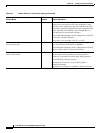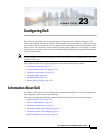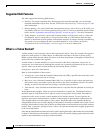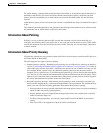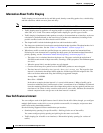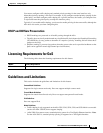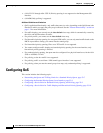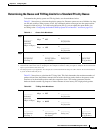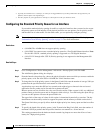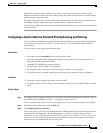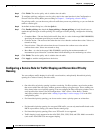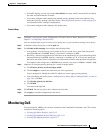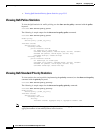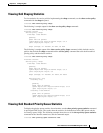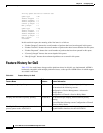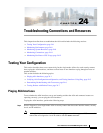
23-8
Cisco ASA Series Firewall ASDM Configuration Guide
Chapter 23 Configuring QoS
Configuring QoS
Configuring the Standard Priority Queue for an Interface
If you enable standard priority queuing for traffic on a physical interface, then you need to also create
the priority queue on each interface. Each physical interface uses two queues: one for priority traffic,
and the other for all other traffic. For the other traffic, you can optionally configure policing.
Note The standard priority queue is not required for hierarchical priority queuing with traffic shaping; see the
“Information About Priority Queuing” section on page 23-3 for more information.
Restrictions
• (ASASM) The ASASM does not support priority queuing.
• (ASA 5580) You cannot create a standard priority queue for a Ten Gigabit Ethernet interface. Note:
For the ASA 5585-X, standard priority queuing is supported on a Ten Gigabit Interface.
• (ASA 5512-X through ASA 5555-X) Priority queuing is not supported on the Management 0/0
interface.
Detailed Steps
Step 1 Go to Configuration > Device Management > Advanced > Priority Queue, and click Add.
The Add Priority Queue dialog box displays.
Step 2 From the Interface drop-down list, choose the physical interface name on which you want to enable the
priority queue, or for the ASA 5505 or ASASM, the VLAN interface name.
Step 3 To change the size of the priority queues, in the Queue Limit field, enter the number of average, 256-byte
packets that the specified interface can transmit in a 500-ms interval.
A packet that stays more than 500 ms in a network node might trigger a timeout in the end-to-end
application. Such a packet can be discarded in each network node.
Because queues are not of infinite size, they can fill and overflow. When a queue is full, any additional
packets cannot get into the queue and are dropped (called tail drop). To avoid having the queue fill up,
you can use this option to increase the queue buffer size.
The upper limit of the range of values for this option is determined dynamically at run time. The key
determinants are the memory needed to support the queues and the memory available on the device.
The Queue Limit that you specify affects both the higher priority low-latency queue and the best effort
queue.
Step 4 To specify the depth of the priority queues, in the Transmission Ring Limit field, enter the number of
maximum 1550-byte packets that the specified interface can transmit in a 10-ms interval.
This setting guarantees that the hardware-based transmit ring imposes no more than 10-ms of extra
latency for a high-priority packet.
2. Typically, the maximum size is 1538 bytes, or 1542 bytes for tagged Ethernet. If you allow jumbo frames (if supported for your
platform), then the packet size might be larger.
3. The delay depends on your application. For example, to control jitter for VoIP, you should use 20 ms.



